#1971 মুক্তিযুদ্ধ
Explore tagged Tumblr posts
Text
মুক্তিযুদ্ধ, ভারমির আর লিম্বার্গের রবিনহুড
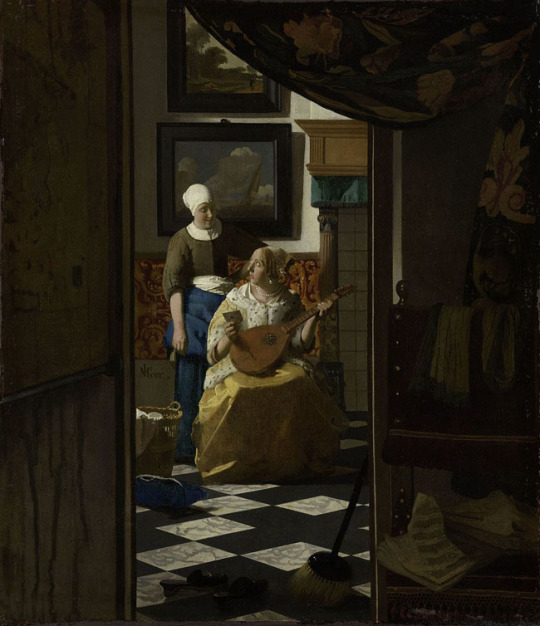
মুক্তিযুদ্ধ নিয়ে আন্তর্জাতিক অঙ্গনে শিল্পীদের ভূমিকার ব্যাপারে কথা বলতে গেলে আমরা কম বেশি সবাই ‘দ্য কন্সার্ট ফর বাংলাদেশ’ এর কথা কথা বলবো। বিটলস-এর জর্জ হ্যারিসন এবং রবিশঙ্করের আয়োজিত এই কনসার্টের ব্যাপারে আমরা কে না জানি? এই প্রদর্শনী বাংলাদেশের শরণার্থীদের জন্য আন্তর্জাতিক সচেতনতা এবং ত্রাণ তহবিল গঠনের প্রচেষ্টা হিসেবে, মূলত স্বাধীনতা যুদ্ধে ঘটে যাওয়া নৃশংসতার বিরুদ্ধে সাহায্যের আবেদন নিয়ে নিউ ইয়র্কের ম্যাডিসন স্কয়ার গার্ডেনে আয়োজন করা হয়েছিলো। কিন্তু আরেকজন আন্তর্জাতিক শিল্পীর শিল্পকর্মের সাথে যে খুব অপ্রত্যাশিতভাবে মুক্তিযুদ্ধের যোগসূত্র আছে সেটা আমার একদমই জানা ছিল না। আর সেই ঘটনাটা আম�� জানতে পারি ২০০৯ সালে শিল্পের ইতিহাস নিয়ে ইন্টারনেট ঘাটতে ঘাটতে। আর তাই নিয়েই আজকের লেখা। শিরোনাম পড়ে এতক্ষণে হয়তো আপনি জেনে গেছেন যে এই চিত্রকর আর কেউ নন বরং জোহানস্ ভারমির (Johannes Vermeer)। সপ্তদশ শতাব্দীর ডাচ চিত্রকর ভারমির তাঁর চিত্রকর্মে অসাধারণ আলোর কারিগরির জন্যে বিশ্ববিখ্যাত। তাঁর চিত্রকর্মে ফুটে উঠেছে সে সময়ের মানুষের দৈনন্দিন জীবনের পুঙ্খানুপুঙ্খ রূপ। চিত্রের এই ফোটোরিয়ালিস্টিক ডিটেইল নিয়ে এখন অব্দি দেশে বিদেশে আর্ট বোদ্ধারা গবেষণা করেন। কিন্তু সপ্তদশ শতকের চিত্রকর ভারমিরের সাথে আমাদের ৭১ এর কি যোগসূত্রই বা থাকতে পারে?
গল্পে এখানটায় আরেকজন চরিত্র চলে আসেন যার নাম মারিয়ো পিয়েরে রয়মান্স (Mario Pierre Roymans)। ১৯৭১ সালের সেপ্টেম্বর মাসে ব্রাসেল্স শহরের ‘ফাইন আর্ট প্যালেস’-এ অনুষ্ঠিত হয় ‘রেমব্রান্ট অ্যান্ড হিস এজ’ নামের একটি প্রদর্শনী যার অংশ হিসেবে প্রদর্শিত হচ্ছিল ভারমিরের অন্যতম চিত্রকর্ম ‘লাভ লেটার’। পর্দার ফাঁক দিয়ে উঁকি দিয়ে দেখছে দর্শক, ১৭ শতকের এক বিশ্বস্ত দাসী মালকিনের হাতে এনে দিল এক প্রেমপত্র! পেইন্টিঙটির মূল বাসস্থান অ্যামস্টারডাম রাইক্স মিউজিয়াম (Rijksmuseum) হলেও এই প্রদর্শনীর উদ্দেশ্যে তাকে আনা হয় ব্রাসেল্সে (Brussels) । আর এই প্রদর্শনীতেই অপ্রত্যাশিতভাবে চুরি যায় ভারমিরের ‘লাভ লেটার’ (Love Letter) । চুরি করেন আমাদের গল্পের মূল চরিত্র রয়মান্স।
২১ বছর বয়সী রয়মান্স প্রদর্শনী চলাকালে একটি বৈদ্যুতিক বাক্সে লুকিয়ে থাকেন। অতঃপর প্রদর্শনী শেষে ‘লাভ লেটার’ নিয়ে ফাইন আর্ট প্যালেসের একটি জানালা দিয়ে বেরুবার চেষ্টা করেন। কিন্তু ভারমিরের মূল পেইন্টিঙটি ছিল জানালার চেয়েও বড়। তখন রয়মান্স তার পকেটে থাকা একটি আলুর খোসা ছাড়ানোর চাকু দিয়ে চিত্রটিকে মূল ফ্রেম থেকে আলাদা করে আনেন। বলা বাহুল্য যে এতে চিত্রকর্মটির অনেক ক্ষতি হয়, কিন্তু এখানেই শেষ নয়, রয়মান্স চিত্রটিকে তার প্যান্টের পেছনে গুঁজে ফেলে প্যালেসের জানালা দিয়ে পালিয়ে যান। চুরির পর রয়মান্স প্রথমে লাভ লেটার লুকিয়ে রাখেন দি সোয়েটেওয়ে হোটেলের ( The Soetewey Hotel) নিজস্ব রুমে। এই হোটেলেরই একজন সাধারণ ওয়েটার ছিলেন রয়মান্স। পরবর্তীতে ছবিটিকে নিজের রুম থেকে সরিয়ে পুঁতে রাখেন জঙ্গলের মাটিতে। ফলশ্রুতিতে ভারমিরের চিত্রকর্মের কি ক্ষয়ক্ষতি হয় পাঠক নিশ্চয়ই ধারণা করতে পারছেন।
কিন্তু এখন প্রশ্ন হচ্ছে, এর সাথে মুক্তিযুদ্ধের সম্পর্কটা কোথায়? হ্যাঁ, বুঝলাম ঘটনাটা ১৯৭১ সালের কিন্তু কোথাও মুক্তিযুদ্ধের কোন যোগসূত্র খুঁজে পাওয়া যাচ্ছে না। তখন আমাদের অঞ্চলে চলছে মানব ইতিহাসের এক বর্বরতম গণহত্যা। টেলিভিশনেই এর ব্যাপারে প্রথম জানতে পারেন রয়মান্স। বাংলার মাটিতে ঘটে যাওয়া বর্বর ধর্ষণ, খুন, রক্তপাতের ঘটনা স্বাভাবিকভাবে নিতে পারেননি রয়মান্স। কিন্তু আরও ভেঙে পরেন যখন দেখতে পান এই বিষয় নিয়ে পশ্চিমে তেমন কোন আলোচনা নেই, কোন পদক্ষেপ নেই, কোন ভাবান্তর নেই! আদর্শবাদী রয়মান্স তখন সিদ্ধান্ত নেন এই মানবিক বিপর্যয়ের বিরুদ্ধে তারই কিছু করা দরকার। যার দরুন তিনি চুরি করেন ‘লাভ লেটার’। বাংলাদেশের স্বাধীনতাযুদ্ধ বিশ্বব্যাপী সাড়া তুলুক না তুলুক ভারমিরের পেইন্টিং চুরি বিশ্বব্যাপী একটি বড় ঘটনা হয়ে দাঁড়ায়। তাৎক্ষনিকভাবে এর খোঁজও শুরু হয় তুমুল আকারে। একই বছর অক্টোবরের ৩ তারিখ রয়মান্স “যেল ভ্যান লিমবার্গ” ছদ্মনামে (রবিন হুডের সমতুল্য একজন কাল্পনিক চরিত্র) ব্রাসেল্সের ‘le Soir’ পত্রিকায় যোগাযোগ করেন। কথামতো কুয়াশাচ্ছন্ন এক ভোরে একজন সাংবাদিক রয়মান্স-এর সাথে দেখা করতে আসেন। প্রায় আধ ঘণ্টা অপেক্ষা করার পর রয়মান্সের সাথে দেখা মেলে, কিন্তু তার চেহারা ছিল এক প্লাস্টিকের মুখোশে মোড়ানো! সাংবাদিককে প্যাসেঞ্জার সিটে ঠেলে দিয়ে রয়মান্স তাকে চোখ বেঁধে ফেলতে বলেন এবং নিজে প্রায় আধঘণ্টা গাড়ি চালিয়ে ছোট একটি গির্জার সামনে এসে গাড়ি থামান। তারপর সাংবাদিককে অপেক্ষা করতে বলে ভেতরে চলে যান। ফিরে আসেন সাদা কাপড়ে মোড়ানো ‘লাভ লেটার’ নিয়ে । পেইন্টিংটি যে তার কাছেই আছে তার প্রমাণ হিসেবে সে গাড়ির হেডলাইটে সাংবাদিকে কিছু ছবি তোলার সুযোগ করে দেন। ফিরতি পথে আবার চোখ বাঁধা সাংবাদিক আর স্টিয়ারিং হাতে রয়মান্স। তবে এসময় রয়মান্স একটু হাল্কা হয়ে শিল্পের প্রতি তার ভালবাসা নিয়ে কথা বলেন। তিনি বলেন যে এই পেইন্টিং সংরক্ষণের জন্যে যদি লাগে তবে জীবনের ১০ বছর দিতে রাজি, তবে তা তো আর সম্ভব নয়। তিনি আরও বলেন, একজন মানবিক ব্যক্তি হিসেবে তার মনে হয়েছিল ৭১-এর গণহত্যা নিয়ে তার কিছু করা উচিত। সে এই পেইন্টিং ফিরিয়ে দেবে। তবে শুধু তার তিনটি দাবী ছিল পরবর্তীতে যা তার ছবিসহ সে পত্রিকায় প্রকাশিত হয়–
১। বাংলাদেশের অত্যাচারিত মানুষের জন্য ২০০ মিলিয়ন ফ্রাঙ্ক পাঠানোর ব্যবস্থা করতে হবে।
২। রাইক্সমিউজিয়াম যাতে বিশ্ব দুর্ভিক্ষ উত্তরণের উদ্দেশ্যে নেদারল্যান্ডে একটি অর্�� সংগ্রহের অভিযানে নামে।
৩। পাশাপাশি বেলজিয়ামের প্যালেস অফ আর্টসও যাতে অর্থ সংগ্রহের অভিযান চালায়।
এই তিন দাবী পূরণের জন্যে রয়মান্সের দেয়া শেষ তারিখ ছিল ৬ই অক্টোবর ১৯৭১ ।
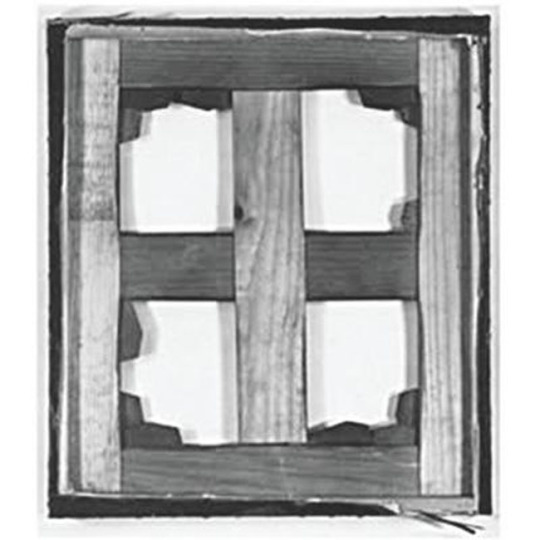
প্রবন্ধ প্রকাশের পরদিনই স্থানীয় পুলিশ ‘Le Soir’ এর প্রধান কার্যালয়ে এসে সেই সাংবাদিককে জিজ্ঞাসাবাদ করে, এবং পুলিশকে আগে এই ব্যাপারে কিছু জানানো হয়নি কেন তা নিয়ে প্রশ্ন তোলে। (এখানে বলে রাখা ভাল যে, আমি অনেক চেষ্টা করেও সেই সাংবাদিকের মূল পরিচয় জানতে পারিনি। আপনাদের মধ্যে যদি কেউ তা জেনে থাকেন, নির্দ্বিধায় আমাকে জানাবেন) । সাংবাদিকের তোলা ছবিগুলো পুলিশ জব্দ করে আর্ট বিশেষজ্ঞের মতামত নিলে পরে জানা যায় ছবিগুলো আসলে ভারমিরেরই । The original Love Letter by the one and only Vermeer. কিন্তু পরিস্থিতি আরও চাঞ্চল্যকর হয় যখন এ.ই.এফ শেনডেল একটি প্রবন্ধ প্রকাশ করে এমন একটা দাবী করেন যে Le Soir এর প্রকাশিত আলোকচিত্র যথেষ্ট নয় লাভ লেটারের সত্যতা প্রমাণের জন্যে, এতে অস্থির হয়ে রয়মান্স আরও কয়েকটি পত্রিকা ও রেডিও স্টেশনের সাথে যোগাযোগ করেন। ডাচ আর্ট হিস্টোরিয়ান ও ভারমির বিশেষজ্ঞ ব্লাংকার্ট-এর ভাষ্যমতে, ডাচ জনগণ রয়মান্সের দাবীতে ব্যাপকভাবে সাড়া দেয়। তার নিজের ভাষায়, জনগণ যেভাবে দাবিগুলো গ্রহণ করেছিল তাকে বলা যায় ‘alarmingly well received’ । তার গ্রেপ্তার ও ওয়ারেন্ট মউকুফের দাবীতে সাধারণ জনগণ আবেদন করে এবং তার প্রস্তাবের সম্মতিতে অনেক ছোটো বড় উদ্যোক্তা বাঙালী শরণার্থীদের জন্যে অর্থ সংগ্রহ শুরু করে। এইদিকে যখন আমাদের অঞ্চলে যুদ্ধ চলছে, আমাদের দেশ স্বাধীন হতে চলেছে, সেইদিকে আমাদের দেশ থেকে হাজার মাইল দূরে ব্রাসেল্সের দেয়ালে-ব্রিজে বাংলার মানুষদের সাহায্যের উদ্দেশ্যে শ্লোগান লিখছে সেদেশের মানুষেরা । কিন্তু পরিস্থিতি তখনো অনেক উত্তেজনাময় সে শহরে, ভারমিরের পেইন্টিং বলে কথা! রয়মান্স টেলিফোন করে এইবার ‘Het Volijk’ পত্রিকা অফিসে, হুমকি দেয় যে ৬ই অক্টোবরের মধ্যে যদি তার দাবী সরাসরি সম্প্রচারে স্বাক্ষর না করা হয় তাহলে সে একজন আমেরিকান আর্ট কালেক্টরের কাছে বিক্রি করে দেবে ‘লাভ লেটার’। কিন্তু ৬ই অক্টোবরই রয়মান্সকে গ্রেপ্তার করে পুলিশ। বিপি সার্ভিস স্টেশানের যে পাবলিক টেলিফোন বুথ থেকে সে পত্রিকায় টেলিফোন করছিলেন, সেই বুথের মালিকের স্ত্রী অ্যানির (Annie Mommens) কাছে রয়মান্সকে সন্দেহজনক মনে হয়েছিল, তাই সে পুলিশে খবর দেয় । বুথের মালিককে পুলিশের সাথে কথা বলতে দেখে রয়মান্স ঘাবড়ে গিয়ে পালানোর চেষ্টা করেছিলেন ঠিকই। তিনি পার্শ্ববর্তী একটি ফার্মে দৌড়ে দুটো গরুর মাঝখানে লুকোনোর চেষ্টা করেন, কিন্তু এবেলা সে চেষ্টা বিফলে যায়। প্রায় দু’সপ্তাহের আতঙ্ক আর অনিশ্চয়তার পর রয়মান্সকে খুঁজে পায় পুলিশ। রয়মান্স তৎক্ষণাৎ পুলিশের হাতে নিজেকে সমর্পণ করে এবং নিজের রুমে নিয়ে গিয়ে দেখিয়ে দেয় পেইন্টিংটি কোথায় লুকোনো আছে ।
দি সোয়েটেওয়ে হোটেল-মালিক মার্কের (Mark Durwael) ভাষ্যমতে, রয়মান্স ছিল খুবই নম্র স্বভাবের একজন আদর্শ কর্মচারী। তবে পাকিস্তানের যুদ্ধ ও বাঙালী শরণার্থীদের কষ্ট তাকে ভাবাতো, সে প্রায়ই এই প্রসঙ্গ আনতো এবং আক্ষেপ করত। মার্ক খেয়াল করত, যে ভারমিরের পেইন্টিং চুরির খবর টেলিভিশনে প্রচার হলেই রয়মান্স খুব সতর্ক হয়ে যেত এবং তা মনোযোগ দিয়ে দেখত। গ্রেপ্তারের পর লিমবার্গের এই রবিনহুড জনগণের তাচ্ছিল্য নয় বরং ভালবাসাটাই বেশি পেয়েছেন। পত্রিকা এবং রেডিও স্টেশনগুলোতে হাজারো চিঠি জমা হতে থাকে তার সমর্থনে। রয়মান্স-এর বিচার হয় ২০ ডিসেম্বর, এবং ১২ জানুয়ারি থেকে তার দুই বছরের কারাদণ্ড শুরু হয়। যদিও রয়মান্স ৬ মাস জেল খাটার পর ছাড়া পেয়ে যান।
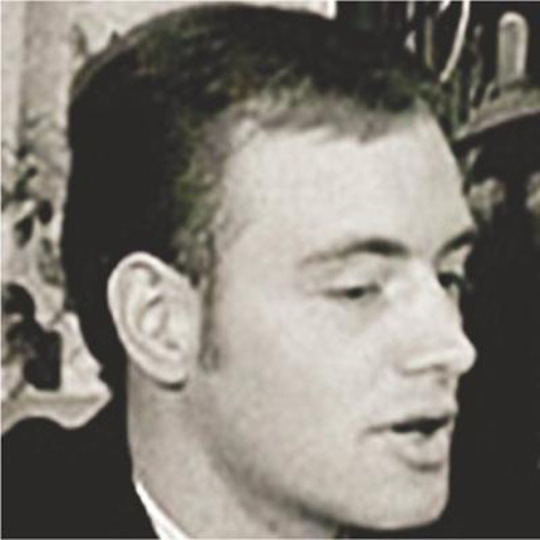
মারিয়ো পিয়েরে রয়মান্স
লিম্বার্গের এই রবিনহুডের জীবনের শেষ পরিণতি সুখকর ছিল না। পৃথিবীর যুদ্ধ, অসামঞ্জস্য তাকে ভাবাতো। তিনি বিয়ে করেছিলেন, তার একটি সন্তানও হয়। কিন্তু এক অমোঘ নিয়তিতে চরম বিষণ্ণতায় ভোগার কারণে তার বিয়ে শেষ পর্যন্ত টেকে না। তার জীবনের শেষ কটা দিন ঘরছাড়া হয়ে নিজের গাড়িতে কাটান। ১৯৭৮ সালের বক্সিং ডেতে তাকে প্রচণ্ড অসুস্থ অবস্থায় তার গাড়িতে পাওয়া যায়। এর ১০ দিন পড় ১৯৭৯ সালের ১০ জানুয়ারি রয়মান্স মৃত্যুবরণ করেন। রয়মান্সের বোনের কথায়, রয়মান্স এমন এক আদর্শবাদী মানুষ ছিলেন, যার জন্যে তার সময় প্রস্তুত ছিলনা (an idealist ahead of his time) । স্যু সমারস (Sue Sommers), রয়মান্সকে নিয়ে একটি বইও লিখেন, তার কথামতে, রয়মান্স মানসিক অসুস্থতায় ভুগছিল। একসময় সে লিওনার্দো দ্য ভিঞ্চির মোনালিসাও চুরি করতে চেয়েছিল!
রয়মান্স গ্রেপ্তারের পর, ৮ অক্টোবর ‘লাভ লেটার’ ফিরে যায় রাইক্স মিউজিয়ামে (Rijksmuseum), ১১ই অক্টোবর একে প্রেসের সামনে প্রদর্শন করা হয়। অতঃপর পেইন্টিং-এর ক্ষতির কারণে তাৎক্ষণিকভাবে একটি ��ন্তর্জাতিক দল গঠন করা হয় ছবিটি পুনরুদ্ধারের (restoration) জন্য । এই পুনরুদ্ধারের কাজ চলে টানা এক বছর ধরে। ১৯৭৩ সালে তা শেষ হলে রাইক্স মিউজিয়ামের ২৩০ নম্বর কক্ষে (Gallery of Honour) ‘লাভ লেটার’ পুনঃপ্রদর্শিত হয়। দর্শকদের ধারণা দেয়ার জন্য এই প্রদর্শনীতে পুনরুদ্ধার কাজ চলাকালীন অনেক আলোকচিত্রও স্থান পায়। সেই তখন থেকে আজ অব্দি লাভ লেটার রাইক্স মিউজিয়ামেই সংরক্ষিত আছে।
যুদ্ধ বিধ্বস্ত সেই দেশটি এখন স্বাধীন বাংলাদেশ। কিন্তু এই বাংলাদেশের একটা ছোট্ট ইতিহাস গায়ে মেখে এখনো রাইক্সের দেয়াল আঁকড়ে আছে ১৭ শতকের ‘লাভ লেটার’।
https://arts.bdnews24.com/?p=22149&fbclid=IwAR1tL2OuxPezDdvkg8IqngogWX0sPUBevtF2XY5SrQj_MHJki7TGwcTFRiY
0 notes
Text
স্বাধীনতার সুবর্ণজয়ন্তীতে মুক্তিযোদ্ধা শিক্ষক-কর্মকর্তা ও অভিভাবকদের সন্মাননা জানালো ড্যাফোডিলের সাংবাদিকতা বিভাগ
সাইদুর রহমান

গত ১৫ই ডিসেম্বর মহান স্বাধীনতা যুদ্ধে বিজয়ের ৫০ বছর পূর্তি উপলক্ষে ড্যাফোডিল ইন্টারন্যাশনাল ইউনিভার্সিটির সাংবাদিকতা, মিডিয়া ও যোগাযোগ বিভাগের (জেএমসি) উদ্��োগে বিশ্ববিদ্যালয়ের মুক্তিযোদ্ধা শিক্ষক-কর্মকর্তা ও অভিভাবকদের সন্মাননা জানানো হয়। ‘৫০ এর ১৬’ শীর্ষক দুই দিনব্যাপী এই আয়োজনের উদ্বোধন করেন বিশিষ্ট মুক্তিযোদ্ধা ও কেন্দ্রীয় কমান্ড কাউন্সিল বাংলাদেশ মুক্তিযোদ্ধা সংসদের সহ-সভাপতি ইসমাত কাদির গামা।

বিশ্ববিদ্যালয়ের তরফে অভিভাবকদের মধ্যে যুদ্ধাহত বীর মুক্তিযোদ্ধা ফরিদ মিয়া, বীর মুক্তিযোদ্ধা মোহাম্মদ আলী, বীর মুক্তিযোদ্ধা মো. আব্দুল হেকিম, বীর মুক্তিযোদ্ধা খন্দকার নূরুল আমিন, এবং শিক্ষক-কর্মকর্তাদের মধ্যে ড্যাফোডিল ইন্টারন্যাশনাল ইউনিভার্সিটির অর্থ বিভাগের পরিচালক বীর মুক্তিযোদ্ধা হামিদুল হক খান, অ্যালাইড হেলথ সায়েন্স অনুষদের সহযোগী ডিন বীর মুক্তিযোদ্ধা ড. বেল্লাল হোসেন, ও ইংরেজী বিভাগের অধ্যাপক বীর মুক্তিযোদ্ধা ড. শামসুল হককে এই সন্মাননা জানানো হয়।

বীর মুক্তিযোদ্ধাদের উত্তরীয় পরিয়ে দিচ্ছেন ইসমাত কাদির গামা
অনুষ্ঠানে মুক্তিযোদ্ধাদের উত্তরীয় পরিয়ে সন্মাননা জানান ইসমাত কাদির গামা এবং ড্যাফোডিল ইন্টারন্যাশনাল ইউনিভার্সিটির মানবিক ও সামাজিক বিজ্ঞান অনুষদের ডিন অধ্যাপক এ এম এম হামিদুর রহমান।

যুদ্ধাহত বীর মুক্তিযোদ্ধা ফরিদ মিয়াকে উত্তরীয় পরিয়ে দিচ্ছেন মানবিক ও সামাজিক বিজ্ঞান অনুষদের ডিন অধ্যাপক এ এম এম হামিদুর রহমান।
‘৫০ এর ১৬’ শীর্ষক বিজয়ের উদযাপনে মুক্তিযোদ্ধাদের সন্মাননা জানানোর পাশাপাশি স্বাধীনতার ৫০ বছরে বাংলাদেশের অর্জন ও অগ্রযাত্রা নিয়ে সাংবাদিকতা, মিডিয়া ও যোগাযোগ বিভাগের (জেএমসি) শিক্ষার্থীদের নির্মিত প্রামাণ্যচিত্র Roar of Bengal Tigers এবং ১৪ই ডিসেম্বর শহীদ বুদ্ধিজীবী হত্যাকান্ড নিয়ে বিভাগের শিক্ষার্থীদের নির্মিত একটি ডকু-ফিকশনও প্রদর্শনী করা হয়।

শহীদ বুদ্ধিজীবী হতাকান্ড নিয়ে নির্মিত সাংবাদিকতা, মিডিয়া ও যোগাযোগ বিভাগের শিক্ষার্থীদের নির্মিত ডকু-ফিকশনের একাংশ
অনুষ্ঠানে প্রধান অতিথির বক্তব্যে ইসমাত কাদির গামা বলেন, অনেক রক্ত ও প্রাণের বিনিময়ে আমরা একটি স্বাধীন দেশ পেয়েছি। এই দেশ কারও দানে পাওয়া নয়। আমাদের এই স্বাধীনতা অর্জনে নেতৃত্ব দিয়েছেন আমাদের মহান নেতা জাতির জনক বঙ্গবন্ধু শেখ মুজিবুর রহমান। এসব সত্য তরুণ প্রজন্মকে হৃদয়ে ধারণ করে দেশকে এগিয়ে নিতে হবে। এসময় তিনি ড্যাফোডিল ইন্টারন্যাশনাল ইউনিভার্সিটিকে ধন্যবাদ জানান এরকম একটি অনুষ্ঠান আয়োজনের মা��্যমে তরুণদেরকে মুক্তিযুদ্ধের সঠিক ইতিহাস জানানোর জন্য।

শিক্ষার্থীদের কাছে নিজের মুক্তিযুদ্ধের অভিজ্ঞতা শোনাচ্ছেন যুদ্ধাহত বীর মুক্তিযোদ্ধা ফরিদ মিয়া
তরুণ শিক্ষার্থীদের উদ্দেশ্যে বিশিষ্ট মুক্তিযোদ্ধা ইসমাত কাদির গামা বলেন, জয় বাংলা হচ্ছে রণধ্বণি। এটি কোনো দলের স্লোগান নয়। এটি হচ্ছে সমস্ত বাঙালির জাতীয় স্লোগান। এসব ইতিহাস আমাদের তরুণদেরকে জানতে হবে।

শিক্ষার্থীদের কাছে নিজের মুক্তিযুদ্ধের অভিজ্ঞতা শোনাচ্ছেন ইসমাত কাদির গামা
তিনি মুক্তিযুদ্ধে অংশগ্রহণ থেকে শুরু করে বিজয়ীর বেশে দেশে ফিরে আসার সুদীর্ঘ গল্প শোনান শিক্ষার্থীদেরকে। শিক্ষার্থীদের উদ্দেশ্যে তিনি আরও বলেন, বহু ত্যাগ ও সংগ্রামের মধ্য দিয়ে আমরা একটি স্বাধীন দেশ পেয়েছি। এই দেশকে এখন বিশ্বের বুকে উন্নত দেশ হিসেবে গড়ে তোলার দায়িত্ব হচ্ছে তোমাদের।

শিক্ষার্থীদের কাছে নিজের মুক্তিযুদ্ধের অভিজ্ঞতা শোনাচ্ছেন বিশ্ববিদ্যালয়ের অ্যালাইড হেলথ সায়েন্স অনুষদের সহযোগী ডিন বীর মুক্তিযোদ্ধা ড. বেল্লাল হোসেন

মুক্তিযোদ্ধাদের কাছ থেকেই মুক্তিযুদ্ধের ইতিহাস শুনছেন শিক্ষার্থীরা
‘৫০ এর ১৬’ শীর্ষক দুই দিনের এই অনুষ্ঠানে ক্যাম্পাসজুড়ে লাল-সবুজের আলোকসজ্জা, বিজয়ের আলোকচিত্র, বিজয় ফানুস ওড়ানো, মোমবাতি প্রজ্বলন, বিজয়ের চলচ্চিত্র ও আলোকচিত্র প্রদর্শনী, বিজয় গ্রাফিতি অংকন, সমবেত কন্ঠে জাতীয় সঙ্গীত, ফ্ল্যাশ মব, বিজয় র্যালী এবং মনোজ্ঞ সাংস্কৃতিক পরিবেশনারও আয়োজন করেছে ড্যাফোডিল ইন্টারন্যাশনাল ইউনিভার্সিটি।

বিজয় দিবস উপলক্ষ্যে লাল-সবুজের আলোকসজ্জায় সেজেছে পুরো ড্যাফোডিল ক্যাম্পাস

মোমবাতি প্রজ্জ্বলন এবং ফানুস উড়িয়ে বিজয়ের ৫০ বছর পূর্তি উদযাপন করছে শিক্ষার্থীরা
#মুক্তিযুদ্ধ#স্বাধীনতা#১৯৭১#একাত্তর#মুক্তিযোদ্ধা#freedom fighters#1971#liberation war#Bangladesh#east pakistan#daffodil international university#journalism#media#communication#jmc#history#war#victory
1 note
·
View note
Text
16 December 1971 history of Bangladesh bangle.
youtube
Victory Day (বিজয় দিবস – Bijoy Dibos):
Is a national holiday in Bangladesh celebrated on December 16 to commemorate the victory of the Allied forces High Command over the Pakistani forces in the Bangladesh Liberation War in 1971. The Commanding officer of the Pakistani Forces General AAK Niazi surrendered his forces to the Allied forces commander Lt. Gen. Jagjit Singh Aurora, which marked ending the 9 month-long[1] Bangladesh Liberation War and 1971 Bangladesh genocide and officially secession of East Pakistan into Bangladesh.
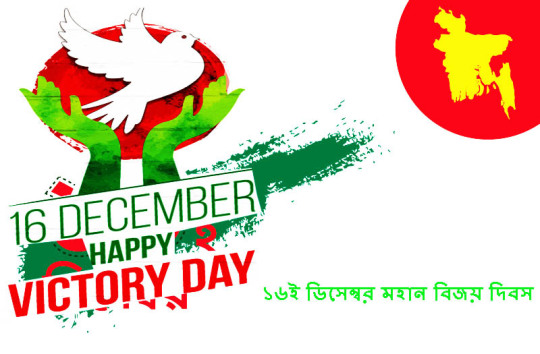
History:
The Bangladesh Liberation War (Bengali: মুক্তিযুদ্ধ Muktijuddho) was a South Asian war of independence in 1971 which established the sovereign nation of Bangladesh. The war pitted East Pakistan and India against West Pakistan, and lasted over a duration of nine months. It witnessed large-scale atrocities, the exodus of 10 million refugees and the displacement of 30 million people.

The war broke out on 26 March 1971, when the Pakistan Army launched a military operation called Operation Searchlight against Bengali civilians, students, intelligentsia and armed personnel, who were demanding that the Pakistani military junta accept the results of the 1970 first democratic elections of Pakistan, which were won by an eastern party, or to allow separation between East and West Pakistan. Bengali politicians and army officers announced the declaration of Bangladesh’s independence in response to Operation Searchlight. Bengali military, paramilitary and civilians formed the Mukti Bahini (Bengali: মুক্তি বাহিনী “Liberation Army”), which engaged in guerrilla warfare against Pakistani forces. The Pakistan Army, in collusion with religious extremist militias (the Razakars, Al-Badr and Al-Shams), engaged in the systematic genocide and atrocities of Bengali civilians, particularly nationalists, intellectuals, youth and religious minorities Neighboring India provided economic, military and diplomatic support to Bengali nationalists, and the Bangladesh government-in-exile was set up in Calcutta.

India entered the war on 3 December 1971, after Pakistan launched pre-emptive air strikes on northern India. Overwhelmed by two war fronts, Pakistani defenses soon collapsed. On 16 December, the Allied Forces of Bangladesh and India defeated Pakistan in the east. The subsequent surrender resulted in the largest number of prisoners-of-war since World War II.
Recognition of Bangladesh:
The Surrender of Pakistan Armed Forces marked the end of the Bangladesh Liberation War and the creation of Bangladesh (later reduced to a single word). Most United Nations member nations were quick to recognize Bangladesh within months of its independence.
Celebration:
The celebration of Victory Day has taken place since 1972. The Bangladesh Liberation War became a topic of great importance in cinema, literature, history lessons at school, the mass media, and the arts in Bangladesh. The ritual of the celebration gradually obtained a distinctive character with a number of similar elements: Military Parade by Bangladesh Armed Forces at the National Parade Ground, ceremonial meetings, speeches, lectures, receptions and fireworks. Victory Day in Bangladesh is a joyous celebration in which popular culture plays a great role. TV and radio stations broadcast special programs and patriotic songs. The main streets are decorated with national flags. Different political parties and socioeconomic organizations undertake programs to mark the day in a befitting manner, including the paying of respects at Jatiyo Smriti Soudho, the national memorial at Savar near Dhaka.
Background:

In August 1947, the Partition of British India gave birth to two new states; a secular state named India and an Islamic state named Pakistan. But Pakistan comprised two geographically and culturally separate areas to the east and the west of India. The western zone was popularly (and for a period of time, also officially) termed West Pakistan and the eastern zone (modern-day Bangladesh) was initially termed East Bengal and later, East Pakistan. Although the population of the two zones was close to equal, political power was concentrated in West Pakistan and it was widely perceived that East Pakistan was being exploited economically, leading to many grievances.

On 25 March 1971, rising political discontent and cultural nationalism in East Pakistan was met by brutal suppressive force from the ruling elite of the West Pakistan establishment in what came to be termed Operation Searchlight.
The violent crackdown by West Pakistan forces led to East Pakistan declaring its independence as the state of Bangladesh and to the start of civil war. The war led to a sea of refugees (estimated at the time to be about 10 million) flooding into the eastern provinces of India. Facing a mounting humanitarian and economic crisis, India started actively aiding and organizing the Bangladeshi resistance army known as the Mukti Bahini.
Political Differences:
Although East Pakistan accounted for a slight majority of the country’s population, political power remained firmly in the hands of West Pakistanis. Since a straightforward system of representation based on population would have concentrated political power in East Pakistan, the West Pakistani establishment came up with the “One Unit” scheme, where all of West Pakistan was considered one province. This was solely to counterbalance the East wing’s votes.

After the assassination of Liaquat Ali Khan, Pakistan’s first prime minister, in 1951, political power began to be devolved to the President of Pakistan, and eventually, the military. The nominal elected chief executive, the Prime Minister, was frequently sacked by the establishment, acting through the President.
East Pakistanis noticed that whenever one of them, such as Khawaja Nazimuddin, Muhammad Ali Bogra, or Huseyn Shaheed Suhrawardy was elected Prime Minister of Pakistan, he were swiftly deposed by the largely West Pakistani establishment. The military dictatorships of Ayub Khan (27 October 1958 – 25 March 1969) and Yahya Khan (25 March 1969 – 20 December 1971), both West Pakistanis, only heightened such feelings.
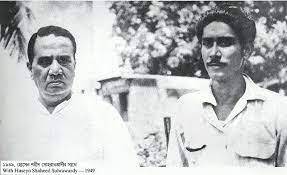
The situation reached a climax when in 1970 the Awami League, the largest East Pakistani political party, led by Sheikh Mujibur Rahman, won a landslide victory in the national elections. The party won 167 of the 169 seats allotted to East Pakistan, and thus a majority of the 313 seats in the National Assembly. This gave the Awami League the constitutional right to form a government. However, Zulfikar Ali Bhutto (a Sindhi), the leader of the Pakistan Peoples Party, refused to allow Rahman to become the Prime Minister of Pakistan. Instead, he proposed the idea of having two Prime Ministers, one for each wing. The proposal elicited outrage in the east wing, already chafing under the other constitutional innovation, the “one unit scheme”. Bhutto also refused to accept Rahman’s Six Points. On 3 March 1971, the two leaders of the two wings along with the President General Yahya Khan met in Dhaka to decide the fate of the country. Talks failed. Sheikh Mujibur Rahman called for a nationwide strike.
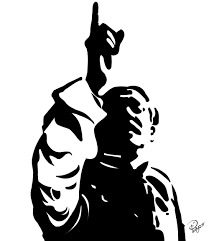
On 7 March 1971, Sheikh Mujibur Rahman (soon to be the prime minister) delivered a speech at the Racecourse Ground (now called the Suhrawardy Udyan). In this speech he mentioned a further four-point condition to consider the National Assembly Meeting on 25 March:
The immediate lifting of martial law.
Immediate withdrawal of all military personnel to their barracks.
An inquiry into the loss of life.
Immediate transfer of power to the elected representative of the people before the assembly meeting 25 March.
He urged “his people” to turn every house into a fort of resistance. He closed his speech saying, “Our struggle is for our freedom. Our struggle is for our independence.” This speech is considered the main event that inspired the nation to fight for its independence. General Tikka Khan was flown in to Dhaka to become Governor of East Bengal. East-Pakistani judges, including Justice Siddique, refused to swear him in.
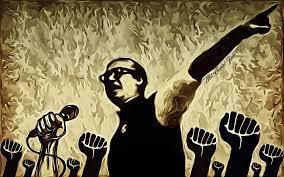
Between 10 and 13 March, Pakistan International Airlines cancelled all their international routes to urgently fly “Government Passengers” to Dhaka. These “Government Passengers” were almost all Pakistani soldiers in civilian dress. MV Swat, a ship of the Pakistani Navy, carrying ammunition and soldiers, was harbored in Chittagong Port and the Bengali workers and sailors at the port refused to unload the ship. A unit of East Pakistan Rifles refused to obey commands to fire on Bengali demonstrators, beginning a mutiny of Bengali soldiers.
Operation Searchlight:
A planned military pacification carried out by the Pakistan Army — code-named Operation Searchlight — started on 25 March to curb the Bengali nationalist movement by taking control of the major cities on 26 March, and then eliminating all opposition, political or military, within one month. Before the beginning of the operation, all foreign journalists were systematically deported from East Pakistan.

The main phase of Operation Searchlight ended with the fall of the last major town in Bengali hands in mid-May. The operation also began the 1971 Bangladesh atrocities. These systematic killings served only to enrage the Bengalis, which ultimately resulted in the secession of East Pakistan later in the same year. The international media and reference books in English have published casualty figures which vary greatly, from 5,000–35,000 in Dhaka, and 200,000–3,000,000 for Bangladesh as a whole.
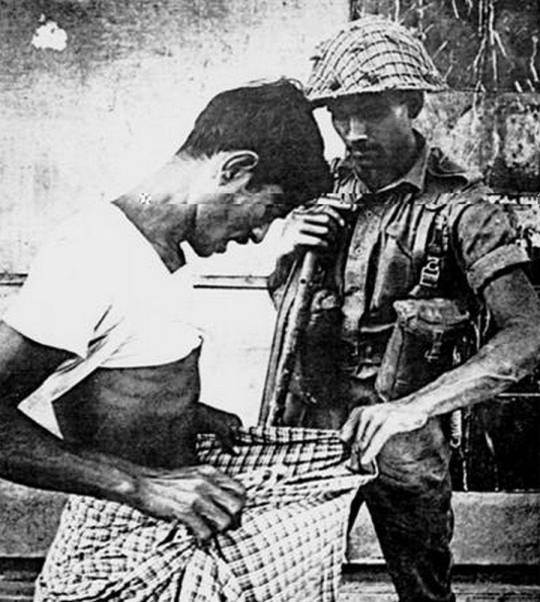
According to the Asia Times,
At a meeting of the military top brass, Yahya Khan declared: “Kill 3 million of them and the rest will eat out of our hands.” Accordingly, on the night of 25 March, the Pakistani Army launched Operation Searchlight to “crush” Bengali resistance in which Bengali members of military services were disarmed and killed, students and the intelligentsia systematically liquidated and able-bodied Bengali males just picked up and gunned down.
Although the violence focused on the provincial capital, Dhaka, it also affected all parts of East Pakistan. Residential halls of the University of Dhaka were particularly targeted. The only Hindu residential hall — the Jagannath Hall — was destroyed by the Pakistani armed forces, and an estimated 600 to 700 of its residents were murdered. The Pakistani army denies any cold blooded killings at the university, though the Hamood-ur-Rehman commission in Pakistan concluded that overwhelming force was used at the university. This fact and the massacre at Jagannath Hall and nearby student dormitories of Dhaka University are corroborated by a videotape secretly filmed by Prof. Nurul Ullah of the East Pakistan Engineering University, whose residence was directly opposite the student dormitories.

Hindu areas suffered particularly heavy blows. By midnight, Dhaka was burning, especially the Hindu dominated eastern part of the city. Time magazine reported on 2 August 1971, “The Hindus, who account for three-fourths of the refugees and a majority of the dead, have borne the brunt of the Pakistani military hatred.”
Sheikh Mujibur Rahman was arrested by the Pakistani Army. Yahya Khan appointed Brigadier (later General) Rahimuddin Khan to preside over a special tribunal prosecuting Mujib with multiple charges. The tribunal’s sentence was never made public, but Yahya caused the verdict to be held in abeyance in any case. Other Awami League leaders were arrested as well, while a few fled Dhaka to avoid arrest. The Awami League was banned by General Yahya Khan.

Atrocities:
During the war there were widespread killings and other atrocities – including the displacement of civilians in Bangladesh (East Pakistan at the time) and widespread violations of human rights – carried out by the Pakistan Army with support from political and religious militias, beginning with the start of Operation Searchlight on 25 March 1971. Bangladeshi authorities claim that three million people were killed, while the Hamoodur Rahman Commission, an official Pakistan Government investigation, put the figure as low as 26,000 civilian casualties. The international media and reference books in English have also published figures which vary greatly from 200,000 to 3,000,000 for Bangladesh as a whole. A further eight to ten million people fled the country to seek safety in India.
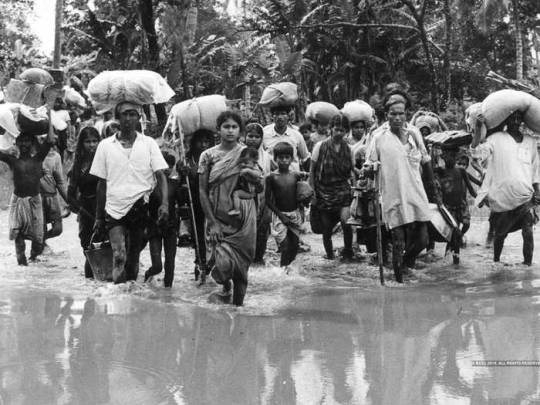
Large sections of the intellectual community of Bangladesh were murdered, mostly by the Al-Shams and Al-Badr forces, at the instruction of the Pakistani Army. Just 2 days before the surrender, on 14 December 1971, Pakistan Army and Razakar militia (local collaborators) picked up at least 100 physicians, professors, writers and engineers in Dhaka, and murdered them, leaving the dead bodies in a mass grave. There are many mass graves in Bangladesh, and as years pass, more are being discovered (such as one in an old well near a mosque in Dhaka, located in the non-Bengali region of the city, which was discovered in August 1999). The first night of war on Bengalis, which is documented in telegrams from the American Consulate in Dhaka to the United States State Department, saw indiscriminate killings of students of Dhaka University and other civilians. Numerous women were tortured, raped and killed during the war; the exact numbers are not known and are a subject of debate. Bangladeshi sources cite a figure of 200,000 women raped, giving birth to thousands of war babies. The Pakistan Army also kept numerous Bengali women as sex-slaves inside the Dhaka Cantonment. Most of the girls were captured from Dhaka University and private homes. There was significant sectarian violence not only perpetrated and encouraged by the Pakistani army, but also by Bengali nationalists against non-Bengali minorities, especially Biharis.
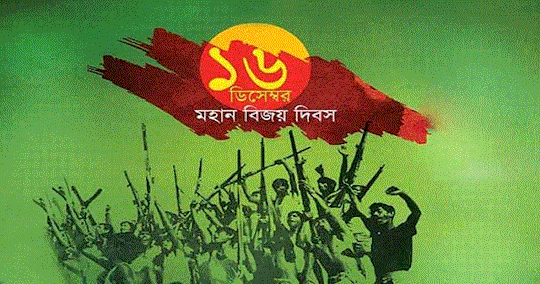
On 16 December 2002, the George Washington University’s National Security Archive published a collection of declassified documents, consisting mostly of communications between US embassy officials and United States Information Service centers in Dhaka and India, and officials in Washington DC. These documents show that US officials working in diplomatic institutions within Bangladesh used the terms selective genocide and genocide to describe events they had knowledge of at the time. Genocide is the term that is still used to describe the event in almost every major publication and newspaper in Bangladesh, although elsewhere, particularly in Pakistan, the actual death toll, motives, extent, and destructive impact of the actions of the Pakistani forces are disputed.
Liberation War:
March to June
At first resistance was spontaneous and disorganized, and was not expected to be prolonged.[45] But when the Pakistani Army cracked down upon the population, resistance grew. The Mukti Bahini became increasingly active. The Pakistani military sought to quell them, but increasing numbers of Bengali soldiers defected to the underground “Bangladesh army”. These Bengali units slowly merged into the Mukti Bahini and bolstered their weaponry with supplies from India. Pakistan responded by airlifting in two infantry divisions and reorganizing their forces. They also raised paramilitary forces of Razakars, Al-Badrs andAl-Shams (who were mostly members of the Muslim League, the then government party and other Islamist groups), as well as other Bengalis who opposed independence, and Bihari Muslims who had settled during the time of partition.
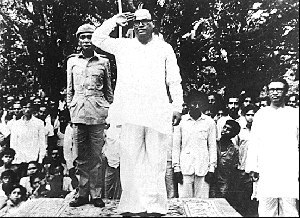
On 17 April 1971, a provisional government was formed in Meherpur district in western Bangladesh bordering India with Sheikh Mujibur Rahman, who was in prison in Pakistan, as President, Syed Nazrul Islam as Acting President, and Tajuddin Ahmed as Prime Minister. As fighting grew between the army and the Bengali Mukti Bahini an estimated 10 million Bengalis, mainly Hindus, sought refuge in the Indian states of Assam and West Bengal.
June – September
Bangladesh forces command was set up on 11 July, with Col. M A G Osmani as commander in chief, Lt. Col. Abdur Rab as chief of Army Staff and Group Captain A K Khandker as Deputy Chief of Army Staff and Chief of Air Force. Bangladesh was divided into Eleven Sectors each with a commander chosen from defected officers of the Pakistani army who joined the Mukti Bahini to conduct guerrilla operations and train fighters. Most of their training camps were situated near the border area and were operated with assistance from India. The 10th Sector was directly placed under a Commander in Chief (C-in-C) and included the Naval Commandos and C-in-C’s special force. Three brigades (11 Battalions) were raised for conventional warfare; a large guerrilla force (estimated at 100,000) was trained.
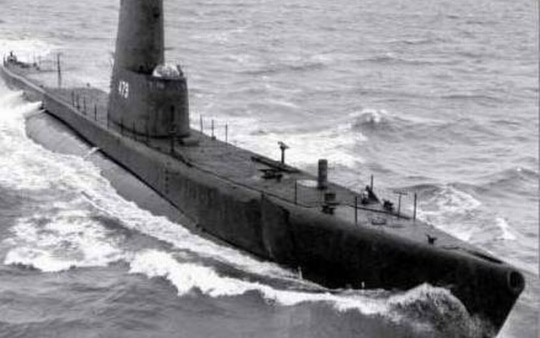
Guerrilla operations, which slackened during the training phase, picked up after August. Economic and military targets in Dhaka were attacked. The major success story was Operation Jackpot, in which naval commandos mined and blew up berthed ships in Chittagong on 16 August 1971. Pakistani reprisals claimed lives of thousands of civilians. The Indian army took over supplying the Mukti Bahini from the BSF. They organised six sectors for supplying the Bangladesh forces.
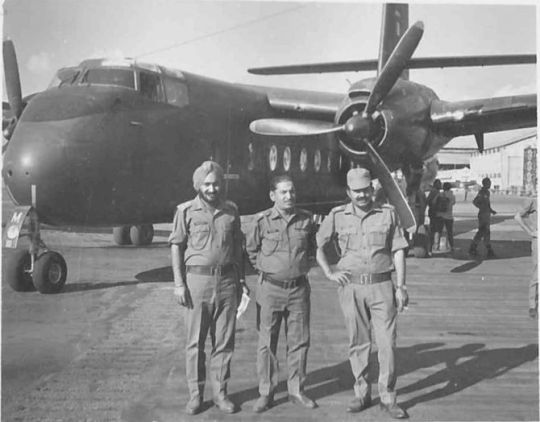
October – December
Bangladesh conventional forces attacked border outposts. Kamalpur, Belonia and Battle of Boyra are a few examples. 90 out of 370 BOPs fell to Bengali forces. Guerrilla attacks intensified, as did Pakistani and Razakar reprisals on civilian populations. Pakistani forces were reinforced by eight battalions from West Pakistan. The Bangladeshi independence fighters even managed to temporarily capture airstrips at Lalmonirhat and Shalutikar. Both of these were used for flying in supplies and arms from India. Pakistan sent 5 battalions from West Pakistan as reinforcements.
Declaration of Independence:
The violence unleashed by the Pakistani forces on 25 March 1971, proved the last straw to the efforts to negotiate a settlement. Following these outrages, Sheikh Mujibur Rahman signed an official declaration that read:
Today Bangladesh is a sovereign and independent country. On Thursday night, West Pakistani armed forces suddenly attacked the police barracks at Razarbagh and the EPR headquarters at Pilkhana in Dhaka. Many innocent and unarmed have been killed in Dhaka city and other places of Bangladesh. Violent clashes between E.P.R. and Police on the one hand and the armed forces of Pakistan on the other, are going on. The Bengalis are fighting the enemy with great courage for an independent Bangladesh. May Allah aid us in our fight for freedom. Joy Bangla.

Sheikh Mujib also called upon the people to resist the occupation forces through a radio message. Mujib was arrested on the night of 25–26 March 1971 at about 1:30 a.m. (as per Radio Pakistan’s news on 29 March 1971).

A telegram containing the text of Sheikh Mujibur Rahman’s declaration reached some students in Chittagong. The message was translated to Bangla by Dr. Manjula Anwar. The students failed to secure permission from higher authorities to broadcast the message from the nearby Agrabad Station of Radio Pakistan. They crossed Kalurghat Bridge into an area controlled by an East Bengal Regiment under Major Ziaur Rahman. Bengali soldiers guarded the station as engineers prepared for transmission. At 19:45 hrs on 27 March 1971, Major Ziaur Rahman broadcast the announcement of the declaration of independence on behalf of Sheikh Mujibur. On 28 March Major Ziaur Rahman made another announcement, which was as follows:
This is Shadhin Bangla Betar Kendro. I, Major Ziaur Rahman, at the direction of Bangobondhu Sheikh Mujibur Rahman, hereby declare that the independent People’s Republic of Bangladesh has been established. At his direction, I have taken command as the temporary Head of the Republic. In the name of Sheikh Mujibur Rahman, I call upon all Bengalis to rise against the attack by the West Pakistani Army. We shall fight to the last to free our Motherland. By the grace of Allah, victory is ours. Joy Bangla.

The Kalurghat Radio Station’s transmission capability was limited. The message was picked up by a Japanese ship in Bay of Bengal. It was then re-transmitted by Radio Australia and later by the British Broadcasting Corporation. M A Hannan, an Awami League leader from Chittagong, is said to have made the first announcement of the declaration of independence over the radio on 26 March 1971. There is controversy now as to when Major Zia gave his speech. BNP sources maintain that it was 26 March, and there was no message regarding declaration of independence from Mujibur Rahman. Pakistani sources, like Siddiq Salik in Witness to Surrender had written that he heard about Mujibor Rahman’s message on the Radio while Operation Searchlight was going on, and Maj. Gen. Hakeem A. Qureshi in his book The 1971 Indo-Pak War: A Soldier’s Narrative, gives the date of Zia’s speech as 27 March 1971.

26 March 1971 is considered the official Independence Day of Bangladesh, and the name Bangladesh was in effect henceforth. In July 1971, Indian Prime Minister Indira Gandhi openly referred to the former East Pakistan as Bangladesh. Some Pakistani and Indian officials continued to use the name “East Pakistan” until 16 December 1971.
Surrender & Aftermath:
On 16 December 1971, Lt. Gen A. A. K. Niazi, CO of Pakistan Army forces located in East Pakistan signed the instrument of surrender. At the time of surrender only a few countries had provided diplomatic recognition to the new nation. Over 90,000 Pakistani troops surrendered to the Indian forces making it the largest surrender since World War II. Bangladesh sought admission in the United Nations with most voting in its favor, but China vetoed this as Pakistan was its key ally. The United States, also a key ally of Pakistan, was one of the last nations to accord Bangladesh recognition. To ensure a smooth transition, in 1972 the Simla Agreement was signed between India and Pakistan. The treaty ensured that Pakistan recognized the independence of Bangladesh in exchange for the return of the Pakistani PoWs. India treated all the PoWs in strict accordance with the Geneva Convention, rule 1925. It released more than 90,000 Pakistani PoWs in five months.
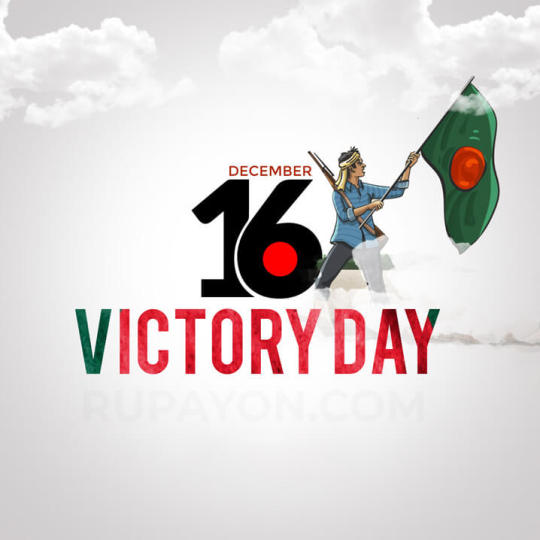
Further, as a gesture of goodwill, nearly 200 soldiers who were sought for war crimes by Bengalis were also pardoned by India. The accord also gave back more than 13,000 km² of land that Indian troops had seized in West Pakistan during the war, though India retained a few strategic areas; most notably Kargil (which would in turn again be the focal point for a war between the two nations in 1999). This was done as a measure of promoting “lasting peace” and was acknowledged by many observers as a sign of maturity by India. But some in India felt that the treaty had been too lenient to Bhutto, who had pleaded for leniency, arguing that the fragile democracy in Pakistan would crumble if the accord was perceived as being overly harsh by Pakistanis.

Thank you...
“Md. Masum Hossan”
10 notes
·
View notes
Text
৯ বছরে যে উন্নয়ন করেছি, বিশ্ব আজ বিস্মিত: প্রধানমন্ত্রী
৯ বছরে যে উন্নয়ন করেছি, বিশ্ব আজ বিস্মিত: প্রধানমন্ত্রী
প্রধানমন্ত্রী ও সংসদ নেতা শেখ হাসিনা বলেছেন, বাংলাদেশকে এক সময় বিশ্বের মানুষ মনেই করত—শুধু ভিক্ষার ঝুঁলি নিয়ে ঘুরে বেড়ায়। এখন বাংলাদেশ ভিক্ষার ঝুঁলি নিয়ে ঘুরে বেড়ায় না। আর ভবিষ্যতেও বেড়াবে না। ভবিষ্যতে যাতে না বেড়ায়, আমরা সেই ব্যবস্থাটা করার জন্যই কাজ করে যাচ্ছি।
বুধবার (৪ জুলাই) দুপুরে দশম জাতীয় সংসদের ২১তম অধিবেশনে প্রধানমন্ত্রীর জন্য নির্ধারিত প্রশ্নোত্তর পর্বে বিরোধী দলীয় সংসদ সদস্য ফখরুল…
View On WordPress
#1971 মুক্তিযুদ্ধ#1971 সালের মুক্তিযুদ্ধ#৯ বছরে যে উন্নয়ন করেছি#জঙ্গিবাদ#জঙ্গিবাদ ও ইসলাম#জঙ্গিবাদ বিরোধী ভিডিও#জঙ্গিবাদের কারণ#জাতিসংঘ#জাতিসংঘ bcs#জাতিসংঘ ও বাংলাদেশ#জাতিসংঘ কি#জাতিসংঘ প্রতিষ্ঠার ইতিহাস#জাতিসংঘ মহাসচিব#জাতিসংঘ শান্তিরক্ষা মিশন#জাতিসংঘে বঙ্গবন্ধুর ভাষণ#জাতিসংঘের ইতিহাস#জাতিসংঘের বর্তমান মহাসচিব কে#জাতিসংঘের মহাসচিবের নাম#জাতিসংঘের সংগঠন সমূহ#দুর্নীতি#দুর্নীতি কাকে বলে#দুর্নীতি দমন#দুর্নীতি দমন কমিশন#দুর্নীতি প্রতিরোধের উপায়#দুর্নীতি বাজ মুভি#দুর্নীতি বিতর্ক#দুর্নীতি বিরোধী কবিতা#দুর্নীতি বিষয়ক বিতর্ক#দুর্নীতি বিষয়ক বিতর্ক প্রতিযোগিতা#দুর্নীতি মামলা
0 notes
Text

#Bangladesh #Abbreviation:
.
B: Blood
A: Achieved
N: Noteworthy
G: Golden
L: Land
A: Admirable
D: Democratic
E: Evergreen
S: Sacred
H: Habitation
.
#বাংলাদেশ: রক্তে অর্জিত স্মরনীয় ভূমি, প্রশংসিত গণতান্ত্রিক চিরসবুজ পবিত্র বাসভূমি।
.
.
Hashtags:
#বাংলাদেশ_নামের_অর্থ,
#১৯৭১, #মুক্তিযুদ্ধ, #স্বাধীনতা, #স্বাধীনতাদিবস, #২৬মার্চ, #২৬শেমার্চ, #২৬শেমার্চ১৯৭১, #বিজয়, #বিজয়দিবস, #১৬ডিসেম্বর, #১৬ইডিসেম্বর,
#1971, #War1971, #1971War,
#Freedom, #FreedomFight, #FreedomWar,
#Independence, #IndependenceDay, #26March, #26thMarch, #March26, #1971March26, #26thMarch1971,
#Victory, #VictoryDay, #16December, #16thDecember, #December16, #1971December16, #16thDecember1971,
#Zone513, #Victor, #Majumder, #VictorMajumder, #Victor_Majumder, #VictorMaj, #VictorM, #VictorApuMaj, #VictorApu, #Victor_Apu, #ViMaj, #ViMajZone, #ViMaj_Zone,
0 notes
Photo

1971 সালে বাংলাদেশ একটি স্বাধীন দেশ হওয়ার জন্য পাকিস্তানের বিরুদ্ধে বাংলাদেশের মুক্তিযুদ্ধ পরিচালনা করে, যার ফলস্বরূপ পূর্ব পাকিস্তানকে ইসলামী প্রজাতন্ত্রের পাকিস্তান থেকে বিচ্ছিন্ন করা এবং বাংলাদেশ নামক সার্বভৌম দেশ প্রতিষ্ঠা করে। যুদ্ধটি পূর্ব পাকিস্তান এবং ভারতকে পশ্চিম পাকিস্তানের বিরুদ্ধে লড়াই করেছিল এবং নয় মাস স্থায়ী হয়েছিল। বিংশ শতাব্দীর সবচেয়ে মারাত্মক যুদ্ধের মধ্যে এটি বিশাল আকারের নৃশংসতা, ১ কোটি শরণার্থীর যাত্রা এবং পাকিস্তানী সশস্ত্র বাহিনীর দ্বারা ৩ মিলিয়ন লোকের হত্যার সাক্ষী ছিল। @sheikh_yasir_arafat @thegoodsayings.in @social_youth_association @pure2solution #16december1971bangladesh #16december1971newspaper #16december1971bangladate #indopakistaniwarof1971results #bangladesh1971warhistory #victorydayparagraph #victorydayofbangladeshessay #victorydayofbangladesh2020 #49thvictorydayofbangladesh #bangladeshindependenceday #victoryday #50thvictorydayofbangladesh #victorydayparagraph #victorydayofBangladeshessay #victorydayofBangladesh2020 #49thvictorydayofBangladesh #Bangladeshindependenceday #50thvictorydayofBangladesh #SYA #sheikh #sheikhyasirarafat #sheikh_yasir_arafat_vlog #sheikh_yasir_arafat #sya_vlog #sonofasheikh #photography#men #model #selfie https://www.instagram.com/p/CI1Ao8KjBRa/?igshid=qyk2ustwn496
#16december1971bangladesh#16december1971newspaper#16december1971bangladate#indopakistaniwarof1971results#bangladesh1971warhistory#victorydayparagraph#victorydayofbangladeshessay#victorydayofbangladesh2020#49thvictorydayofbangladesh#bangladeshindependenceday#victoryday#50thvictorydayofbangladesh#sya#sheikh#sheikhyasirarafat#sheikh_yasir_arafat_vlog#sheikh_yasir_arafat#sya_vlog#sonofasheikh#photography#men#model#selfie
0 notes
Link
বর্তমান পাকিস্তানের নতুন প্রজন্ম ৭১ এর মুক্তিযুদ্ধ সম্পর্কে জঘন্যতম মিথ্যা গুলো জেনে বড় হচ্ছে । 1971 https://cutt.ly/4nbRLEK
0 notes
Text
মুক্তিযুদ্ধ ভিত্তিক চলচ্চিত্রের তালিকা
মুক্তিযুদ্ধ ভিত্তিক চলচ্চিত্রের তালিকা
Bangladesh 1971’s Liberation War Movie list preparation for any competitive exams, Questions and Answer under General knowledge Section
১। অরুণোদয়ের অগ্নিসাক্ষী : সুভাষ দত্ত; (১৯৭৪) ২। ওরা ১১ জন : চাষী নজরুল ইসলাম; (১৯৭২) ৩। আবার তোরা মানুষ হ : খান আতাউর রহমান (ফারুক,ববিতা) ৪। রক্তাক্ত বাংলা (কবরী,বিশ্বজিৎ) ৫। বাঘা বাঙ্গালি : আনন্দ ৬। একাত্তরের যীশু : নাসিরুদ্দিন ইউসুফ; (১৯৯৫);(শাহরিয়ার…
View On WordPress
0 notes